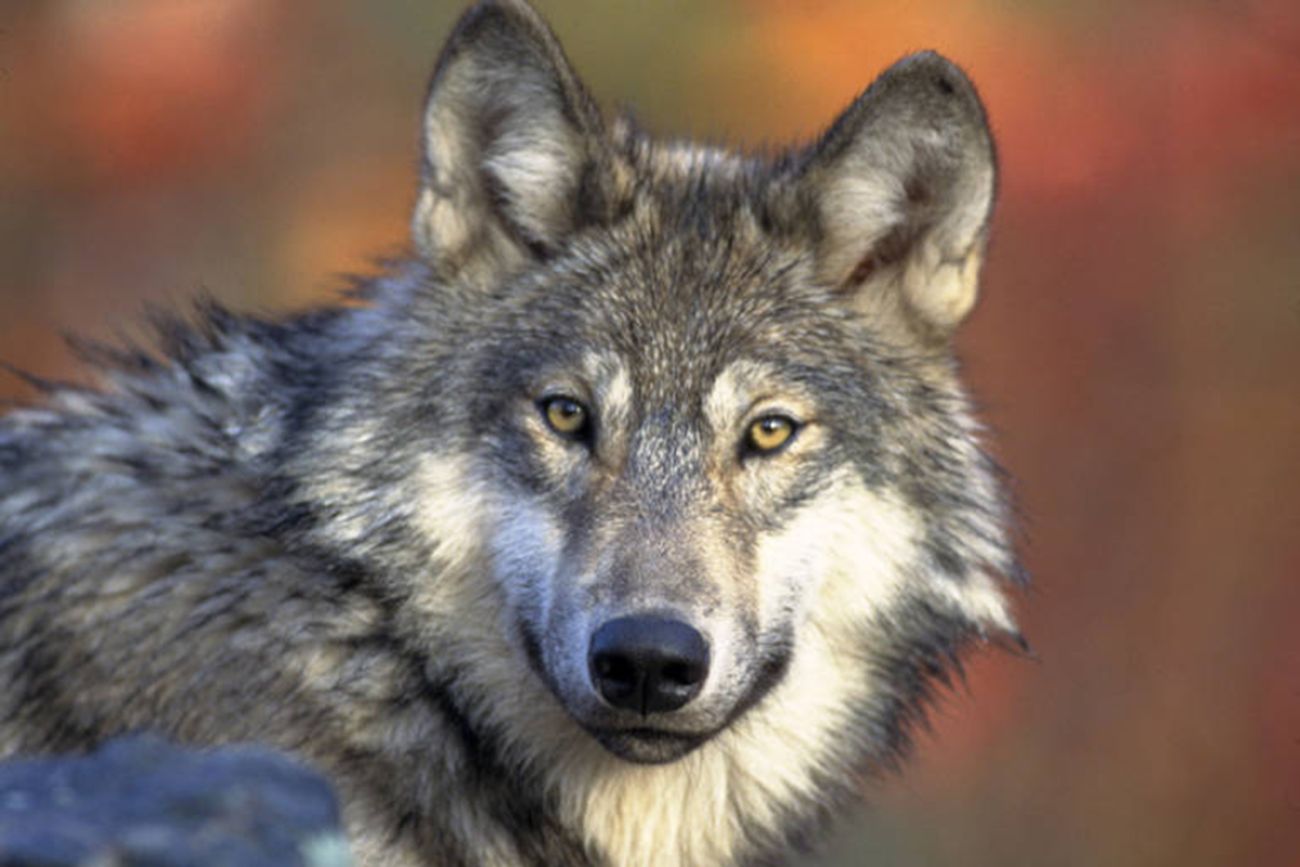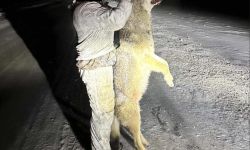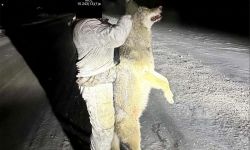Wolf killed in southern Michigan is first sighting in more than 100 years

- A hunter killed a confirmed gray wolf in Calhoun County in January
- The only known wolf population in Michigan is in the Upper Peninsula, hundreds of miles north
- The Michigan Department of Natural Resources said there is no evidence of an established wolf population in southern Michigan
April 25: Southern Michigan dead wolf mystery deepens; records suggest it was trapped
April 19: Hunter should not face charges for killing wolf, Michigan GOP lawmakers say
April 10: Dead wolf mystery in south Michigan deepens, prompts criminal probe
Wildlife officials confirmed Wednesday the killing of a gray wolf in southern Michigan, hundreds of miles from the state’s only known wolf population in the Upper Peninsula.
A hunter killed the wolf in January in Calhoun County, believing it to be a coyote, according to the Michigan Department of Natural Resources.
A subsequent DNA test determined it was a gray wolf — a far larger wild canid that can weigh up to 145 pounds. Coyotes typically do not exceed 45 pounds.
Related:
- Wolf wars: As Michigan packs grow, a battle brews over killing the predators
- Michigan weighs criteria for wolf hunts if they're delisted as endangered
- Michigan wildlife official cries wolf. Gray wolf advocates want him gone.
- With wolf plan complete, Michiganders lobby state on possibility of a hunt
In announcing the discovery Wednesday, the Michigan Department of Natural Resource said it’s been more than 100 years since a gray wolf has been seen in the southern Lower Peninsula.
The state’s wolf population is located in the Upper Peninsula but the DNR said it is continuing to search for wolves in the Lower Peninsula. The department has found only a few indications of wolves in the Lower Peninsula since the U.P. population was re-established in the 1980s.
“The department does not suspect the animal was part of an established population in the southern Lower Peninsula,” the DNR said in a press release.
The hunter told the DNR that he was legally hunting coyotes with a guide when they came across what they thought was just a large coyote.
The hunter then killed the animal, which weighed 84 pounds.
Once present throughout Michigan, wolves are now confined almost exclusively to the Upper Peninsula. Their presence has brought controversy, as some want to hunt the animal and others seek to protect it. In 2021, there were an estimated 700 wolves in the U.P.
Gray wolves remain an endangered species in Michigan by federal court order and can be killed only if they are a direct and immediate threat to human life. Livestock owners affected by wolf depredation can receive compensation for their losses.
The DNR said the “public does not need to be concerned about broader wolf presence in the county or the Lower Peninsula.” It noted ,though, that the animals can travel thousands of miles.
"This is an unusual case, and the DNR is actively delving into the matter to learn more about this particular animal's origin," said Brian Roell, large carnivore specialist for the DNR. "While rare, instances of wolves traversing vast distances have been documented, including signs of wolves in recent decades in Michigan’s Lower Peninsula.”
Although the DNR does not believe there is a wolf population in southern Michigan, it noted several signs in the northern Lower Peninsula:
- In October 2004, a wolf originally collared in the eastern Upper Peninsula was captured and killed by a coyote trapper in Presque Isle County, some 60 miles southeast of the Mackinac Bridge.
- During winter track surveys in 2011 and 2015, track evidence consistent with wolf-like animals was observed in Cheboygan and Emmet counties, south and southwest of the bridge.
- In 2014, biologists from the Little Traverse Bay Bands of Odawa Indians in Emmet and Charlevoix counties captured a wolf on a trail camera during an eagle survey. DNA analysis of scat collected at the site confirmed the animal as a wolf.
Because of the investigation, the DNR declined to share a photo of the wolf recently found in Calhoun County.
Coyote hunting advocates this week filed a lawsuit against Michigan’s Natural Resources Commission, which recently shortened the hunting season from year-round to nine months.
Michigan Environment Watch
Michigan Environment Watch examines how public policy, industry, and other factors interact with the state’s trove of natural resources.
- See full coverage
- Subscribe
- Share tips and questions with Bridge environment reporter Kelly House
Michigan Environment Watch is made possible by generous financial support from:
Our generous Environment Watch underwriters encourage Bridge Michigan readers to also support civic journalism by becoming Bridge members. Please consider joining today.
See what new members are saying about why they donated to Bridge Michigan:
- “In order for this information to be accurate and unbiased it must be underwritten by its readers, not by special interests.” - Larry S.
- “Not many other media sources report on the topics Bridge does.” - Susan B.
- “Your journalism is outstanding and rare these days.” - Mark S.
If you want to ensure the future of nonpartisan, nonprofit Michigan journalism, please become a member today. You, too, will be asked why you donated and maybe we'll feature your quote next time!






